One of the most common in their normal range, they are also one of the most beautiful, but very rare in the United States.
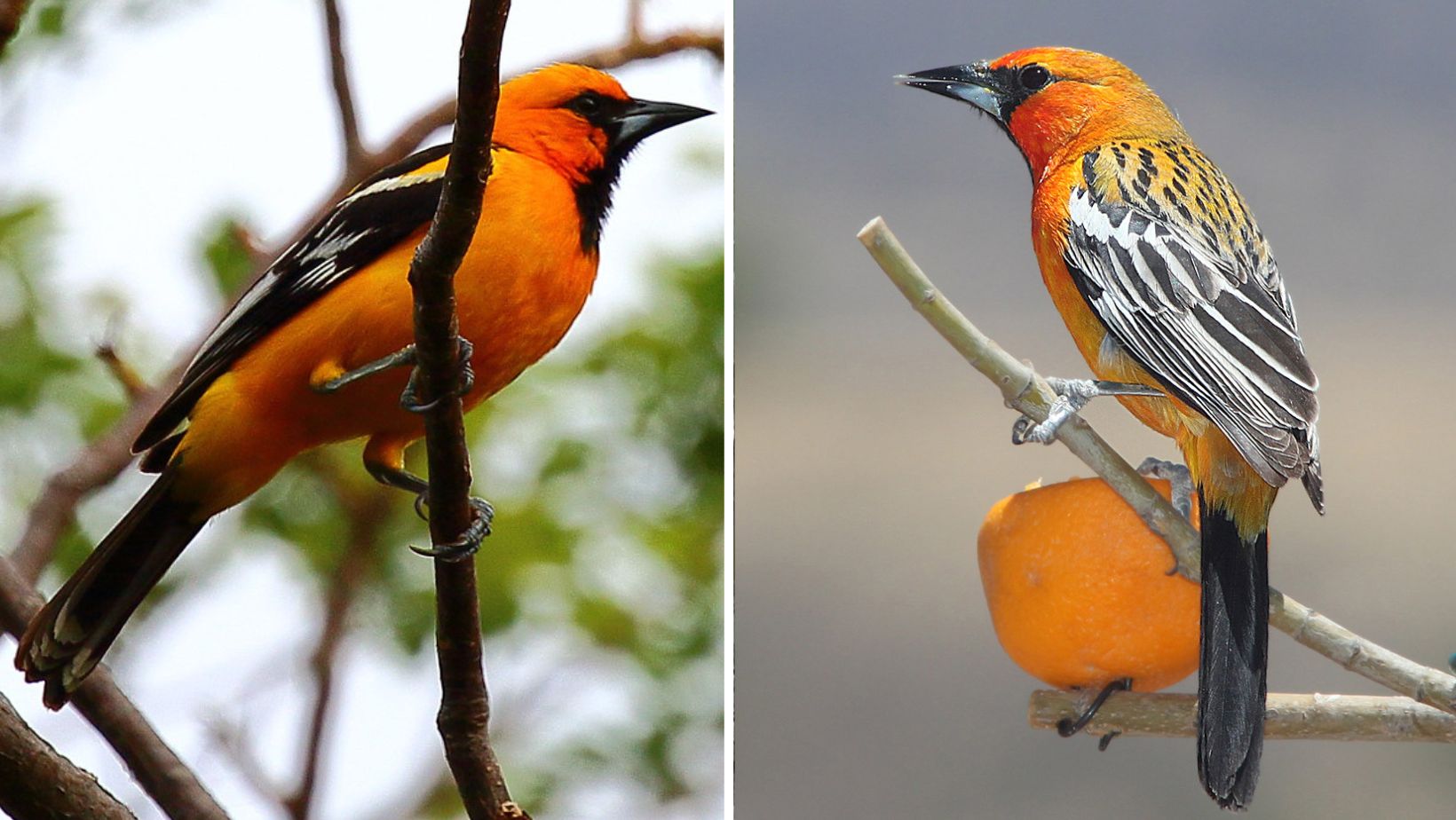
Meet the Streak-backed Oriole
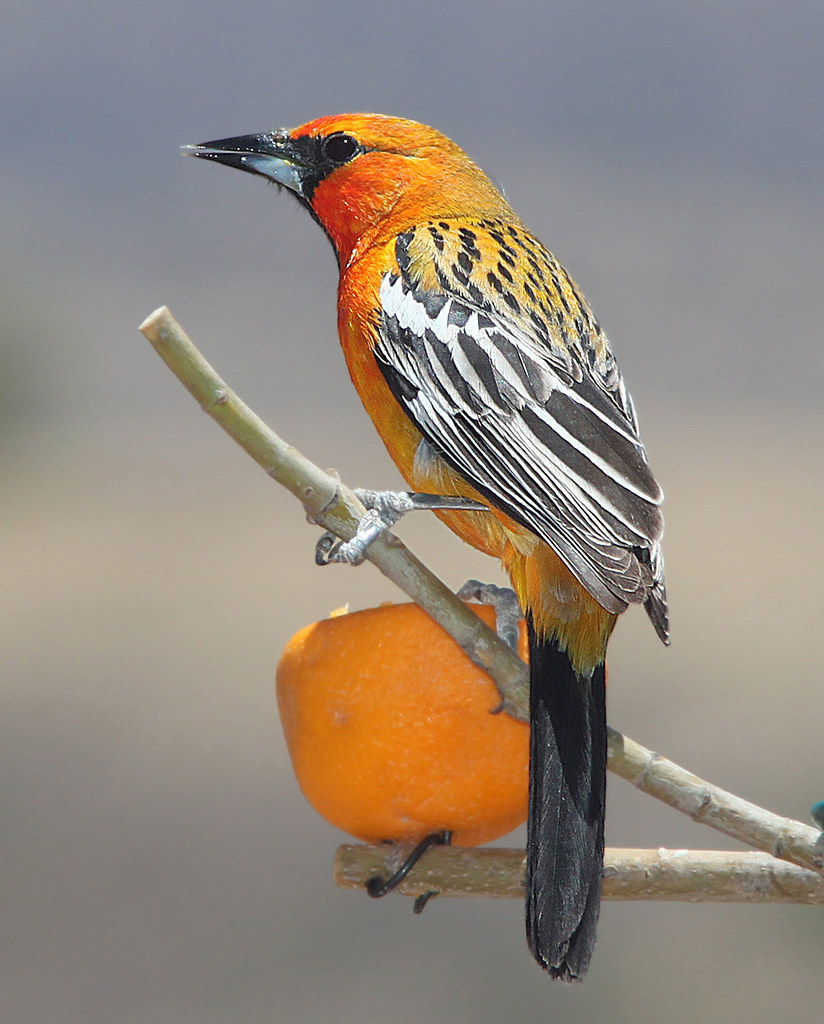
Photo Courtesy of Sloalan / Public Domain
The streak-backed oriole (Icterus pustulatus) is a medium-sized species of passerine bird from the icterid family. Streak-backed Orioles measure about 7.87 inches (200 mm) in length (including the tail); the wingspan ranges from 3.54 – 4.65 inches (90 – 118 mm); and they weigh between 2.47 – 3.00 oz (70 – 85 grams). Males are generally larger than females.” New World Blackbirds: The Icterids,”subspecies are divided into three groups. What is unique to this group is that the males occurring in the northern range are brightly colored while the females are generally dull.
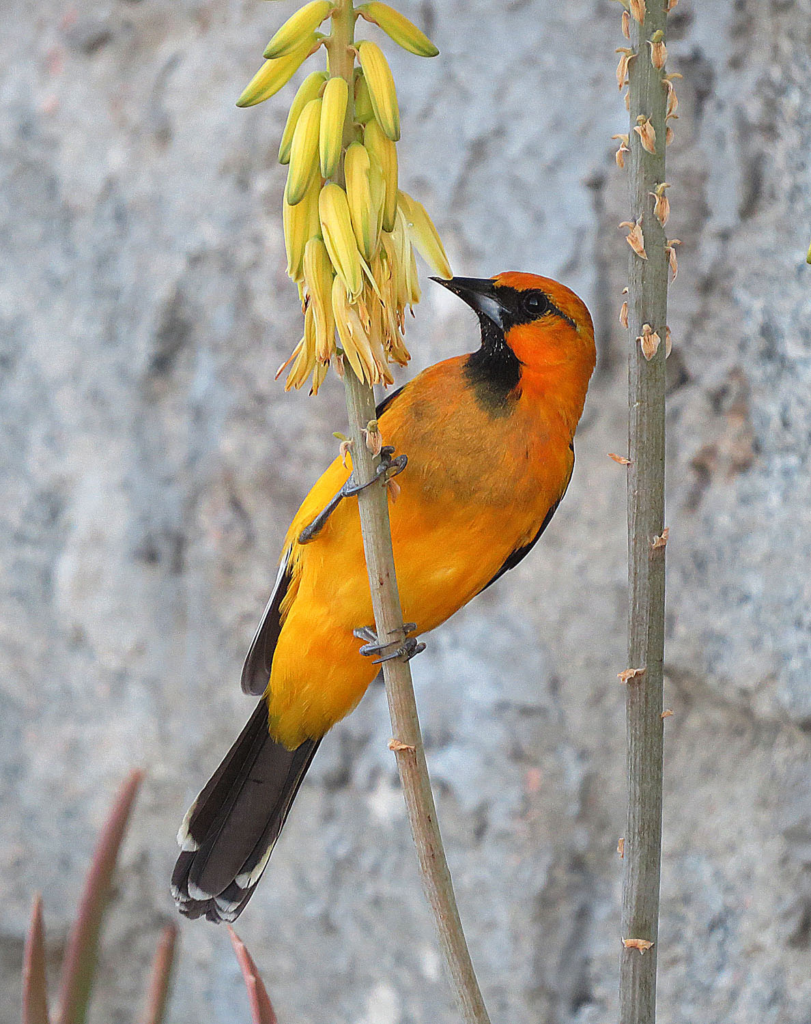
Photo Courtesy of Dick Culbert / CC BY 2.0
As one moves southwards, the female plumages become gradually brighter until, at the southern end of their distribution, the females look like the males.
More brightly colored females are also more active in territorial defenses than their duller northern counterparts.
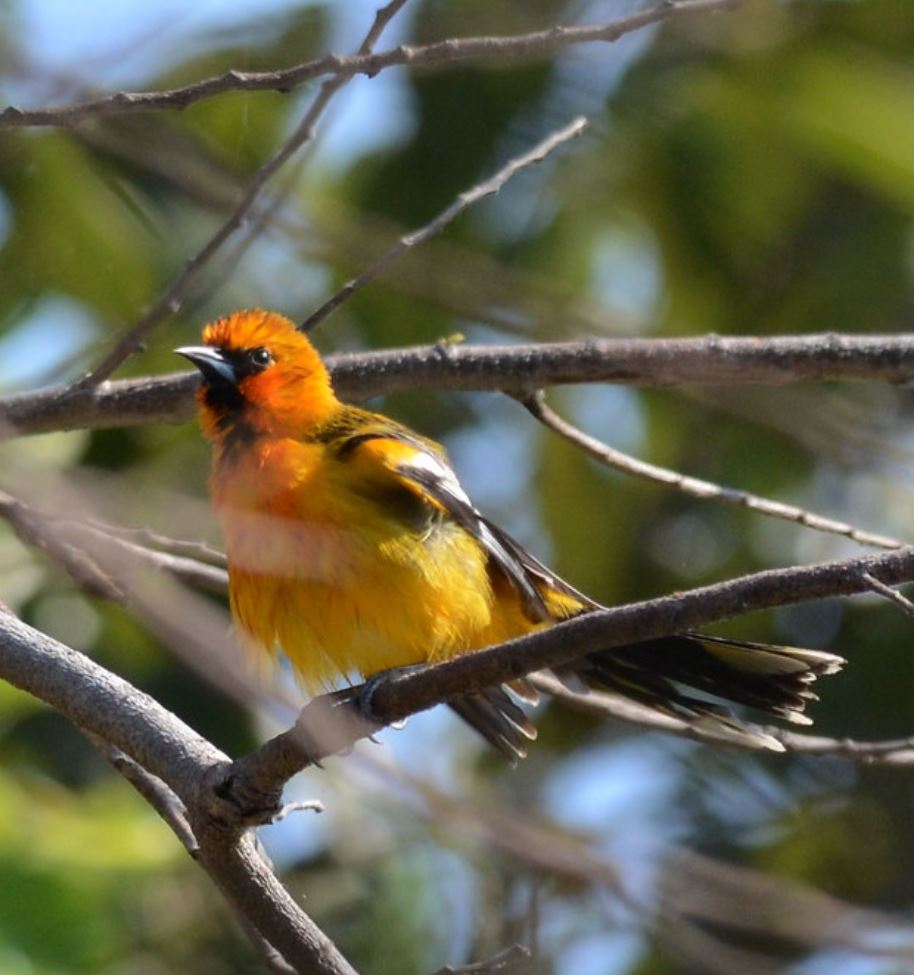
Photo Courtesy of Amado Demesa Arévalo / CC BY-SA 2.0
This bird is native to Central America and Mexico and is an occasional visitor to the United States.
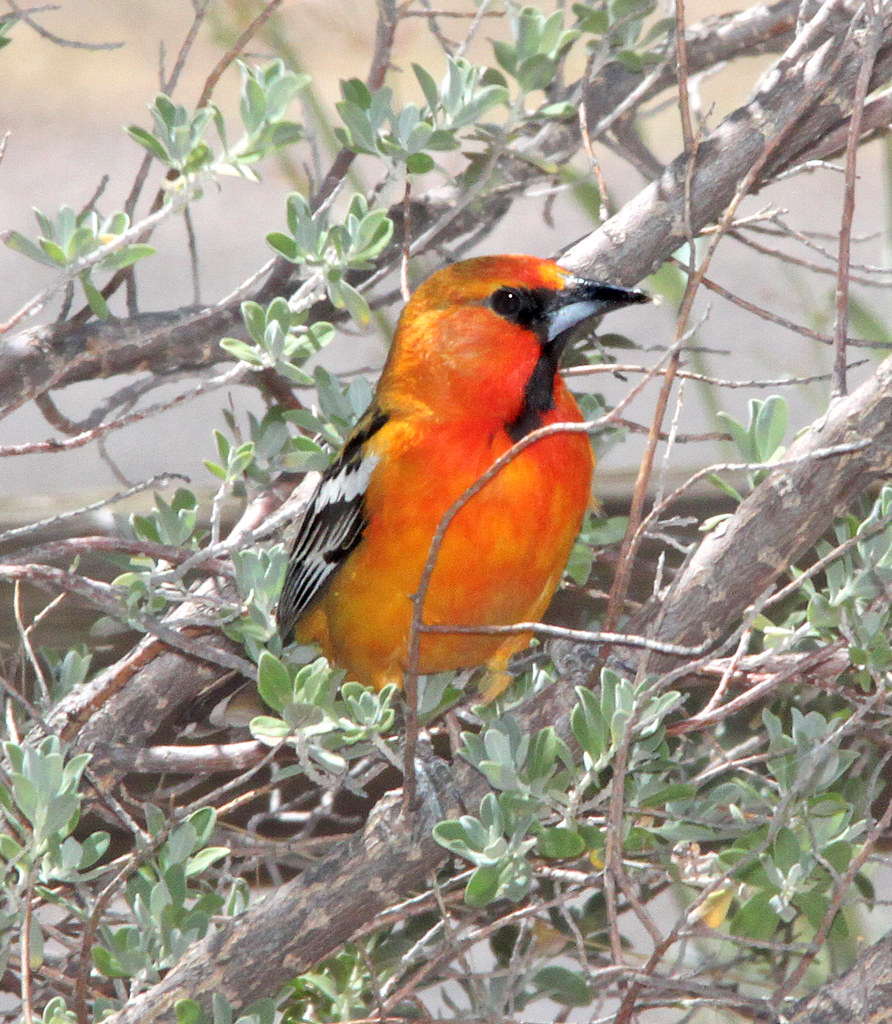
Photo Courtesy of Sloalan / Public Domain
They are usually found in open woodlands and semi-arid shrublands. In much of their range, they prefer open woodlands with thorny Mimosa shrubs in the undergrowth. They also seem to prefer areas of other thorny bush species when Mimosa is not present.
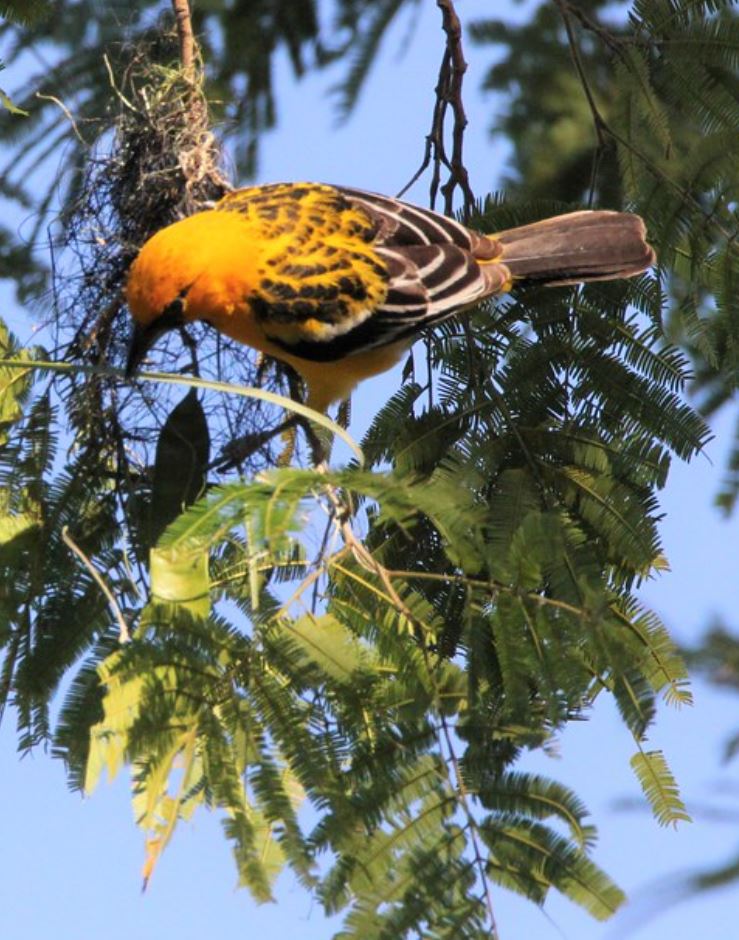
Photo (cropped) Courtesy of ninahale / CC BY 2.0
Streak-backed oriole feeds heavily on insects and spiders, but will also eat fruits, berries, seeds, and nectar.
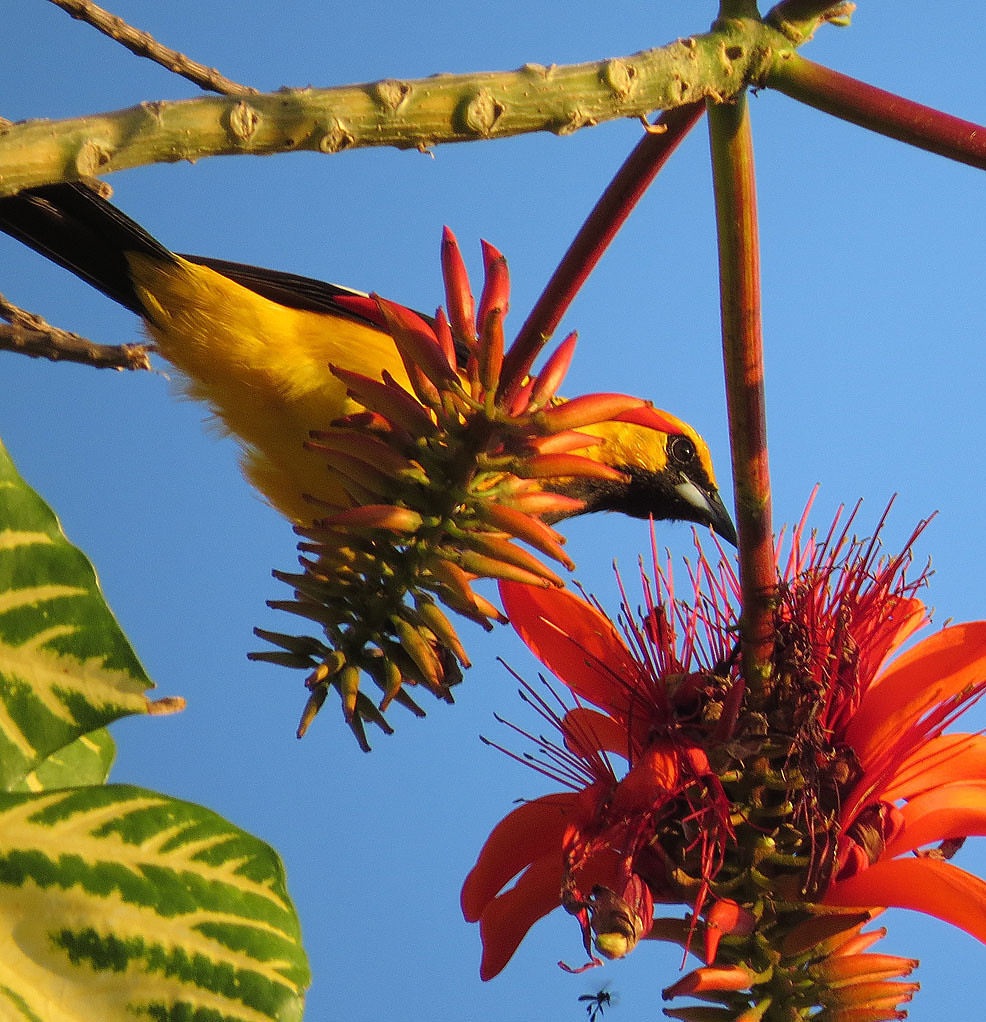
Photo Courtesy of Dick Culbert / CC BY 2.0
Streak-backed orioles are seasonally monogamous (remaining with one mate for the entire breeding season). They usually breed once a year, with most nesting activities being reported in mid to late spring and ending in mid-to-late summer. Some variations between the different areas exist. The female alone constructs the nest out of plant fibers in the shape of a long hanging basket (about 28 inches or 70 cm in length). These nests are attached to the tips of branches. The average clutch consists of 3 – 4 eggs, which are incubated for 12 – 14 days to hatching. The young remain in the nest for about 2 weeks before fledging; and are being taken care of by both parents.
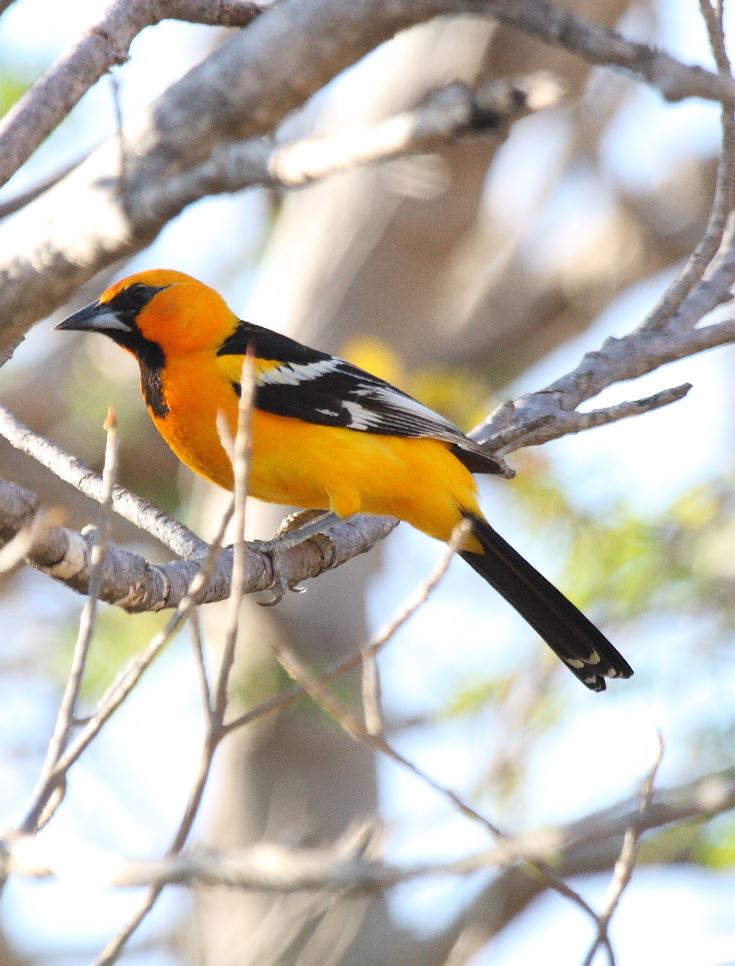
Photo Courtesy of dominic sherony / CC BY-SA 2.0
Populations of this bird are considered stable, and the IUCN lists the Streak-backed Oriole as a species of “Least Concern”
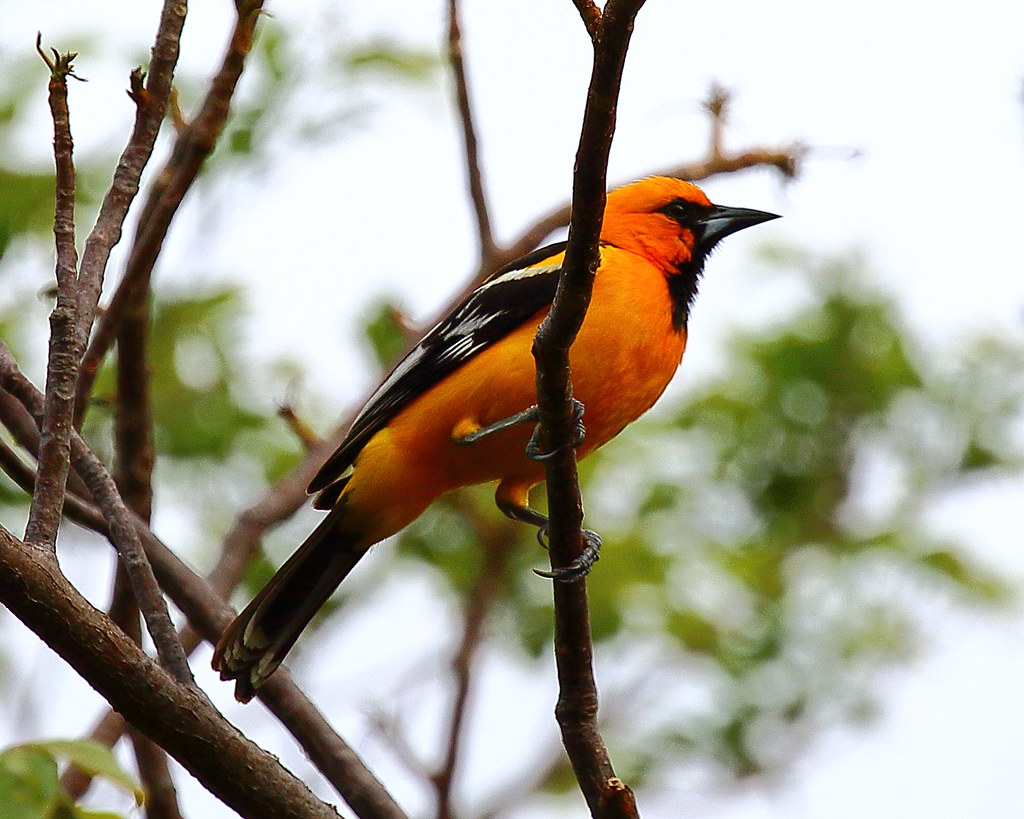
Photo Courtesy of ryanacandee / CC BY 2.0
WATCH AND LISTEN TO THIS BIRD RIGHT HERE BELOW:

